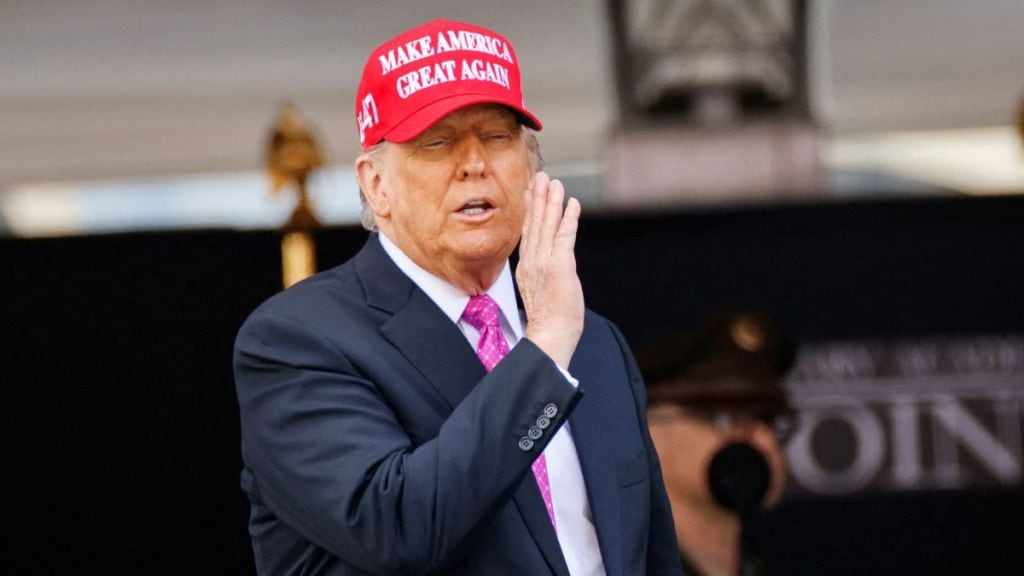US president Donald Trump on Wednesday raised the additional tariff on India to 50% from 25% announced on July 30, attributing the new quantum to New Delhi’s “continued purchase of Russian oil.” The move not only made India the “highest tariffed country” by the world’s largest economy, along with Brazil, but also reeked of India-US bilateral relations plunging to a multi-decade low, bordering on hostility.
The new tariff order was signed by Trump less than 14 hours before his initial extra tariff was to come into effect. The latest levy will come into effect after 21 days, a window available to New Delhi to respond to the US demand for ceasing oil imports from Russia if it opts to do so.
But government circles here indicated no haste in complying with Trump’s diktat, while a visit of a US team scheduled for later this month for the sixth round of talks on a bilateral trade agreement (BTA) hasn’t yet been called off.
India Defends Energy Policy as a Matter of National Security
The ministry of external affairs stated on X: “The actions taken by the US are unfair, unjustified and unreasonable. India will take all actions necessary to protect its national interests.”
The ministry added that India’s imports are based on market factors and done with the overall objective of ensuring the energy security of its 1.4 billion people. “It is therefore extremely unfortunate that the US should choose to impose additional tariffs on India for actions that several other countries are also taking in their own national interest.”
On Tuesday, issuing a similar statement in the wake of Trump’s plan to hike tariffs on India, the MEA had noted that the “very nations” criticising India were themselves indulging in trade with Russia, in a tacit reference to US imports of uranium hexafluoride, palladium, as well as fertilisers and chemicals from Russia.
The additional US levy will apply over and above the most favoured nation (MFN) rates, and could cover 65% of India’s exports to the US that stood at over $87 billion in 2024. This estimate factors in the assorted product-specific exemptions, including those for electronics, semiconductors, pharmaceutical products, energy and a few chemicals. The extra duty of 50% on steel and aluminium and their products and a 25% auto tariff will continue.
Product-specific levies as well as exemptions are applicable to all countries, while the Trump administration pursues what it calls “reciprocal tariffs” policy, in sync with its “America first” strategy that unsettled the world trade order.
The latest executive order against India came hours after talks between Washington and Moscow over the war in Ukraine failed to yield a breakthrough.
“I find that the Government of India is currently directly or indirectly importing Russian Federation oil. Accordingly, and as consistent with applicable law, articles of India imported into the customs territory of the United States shall be subject to an additional ad valorem rate of duty of $25,” Trump said in Wednesday’s order.
Key Indian Industries Brace for Economic Fallout
Among the Indian industries, textiles and clothing, gems and jewellery, shrimp, leather and footwear, animal products, chemicals, and electrical and mechanical machinery could be hit the hardest by the US tariffs. Loss of export markets could result in large-scale lay-offs and loss of jobs/livelihood in these sectors.
Founder of think tank GTRI Ajay Srivastava said that a 50% additional tariff for entry into the US market could make Indian goods far costlier in the US, with potential to cut US-bound exports by 40–50% in the current financial year.
According to Federation of Indian Export Organisations (FIEO) president S C Ralhan, the additional tariff would directly impact 55% of India’s shipments to the US. “The 50% reciprocal tariff effectively imposes a cost burden, placing our exporters at a 30–35% competitive disadvantage compared to peers from countries with lesser reciprocal tariff,” he said.
Many export orders to the US have already been put on hold as buyers reassess sourcing decisions in light of higher landed costs. “For a large number of MSME-led sectors, absorbing this sudden cost escalation is simply not viable. Margins are already thin, and this additional blow could force exporters to lose long-standing clients,” Ralhan added.
India meets 88% of its crude oil requirement via imports. In July, the country imported about 5 million barrels of oil a day, of which 1.6 million came from Russia.
After the latest move by the US , India’s competitors will be much better placed in the US market compared to it. The tariffs faced in the US by some of the Asian countries are as follows: Japan (15%), South Korea (15%), Vietnam (20%), Indonesia (19%), Malaysia (19%), Bangladesh (20%), Pakistan (19%), and Sri Lanka (20%). Chinese goods attract 30-35% plus additional 20% fentanyl tariffs in the US.


